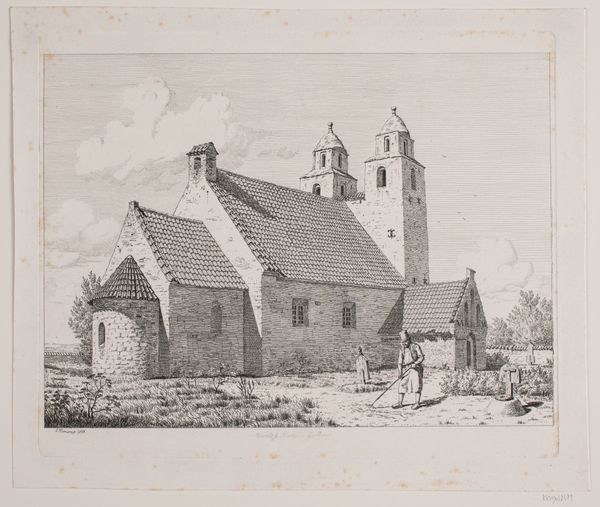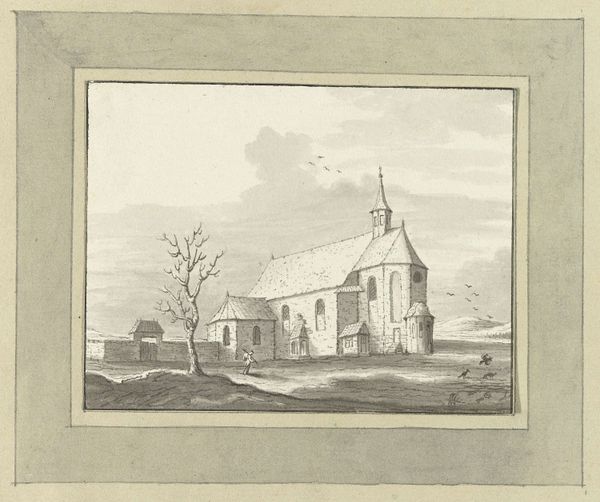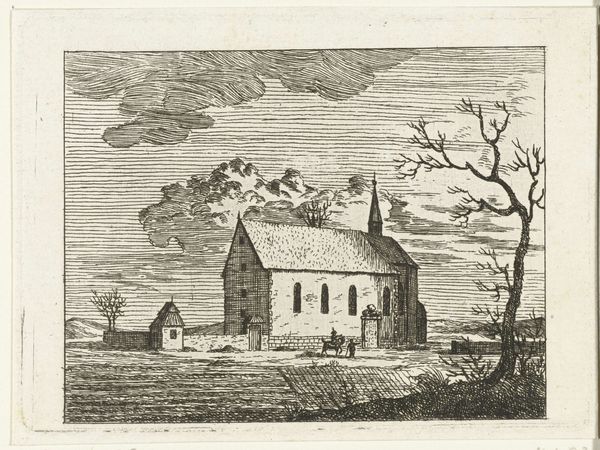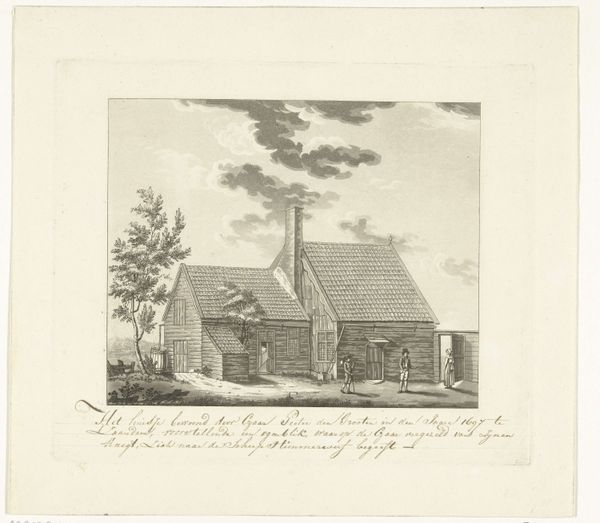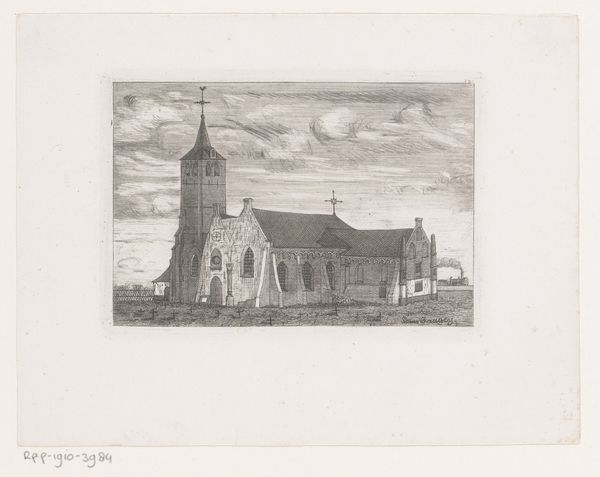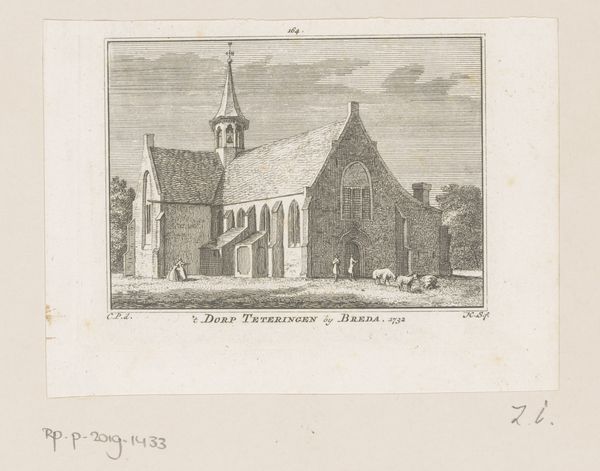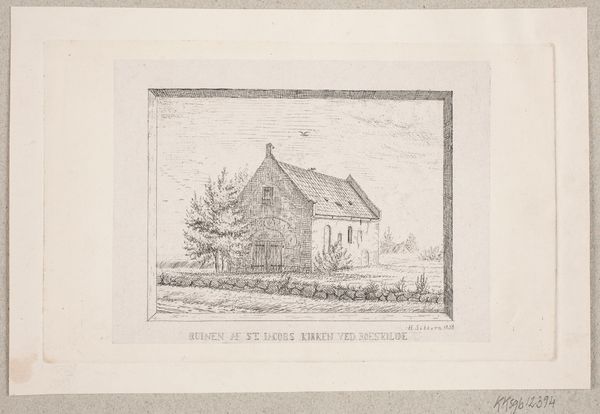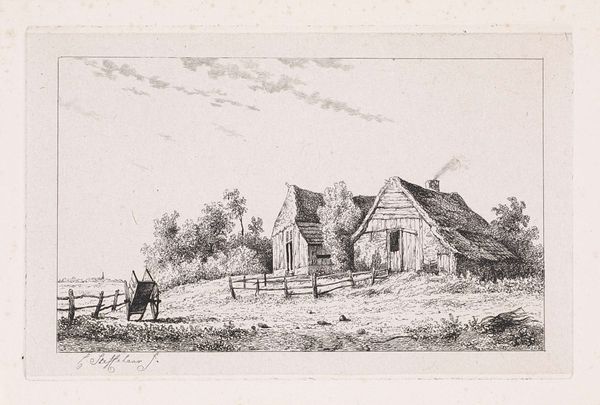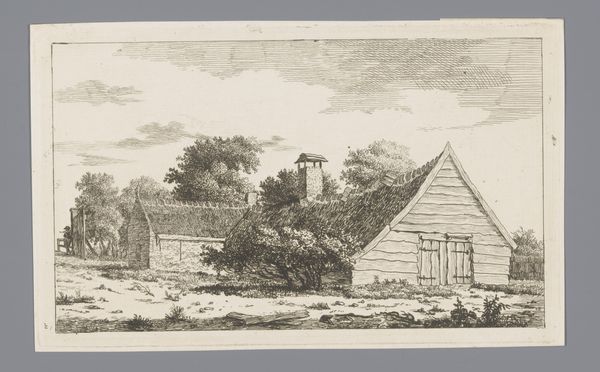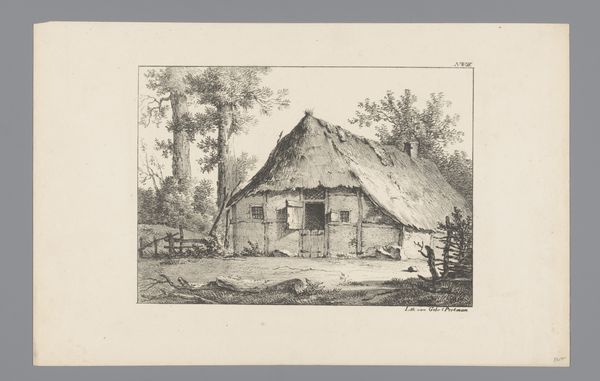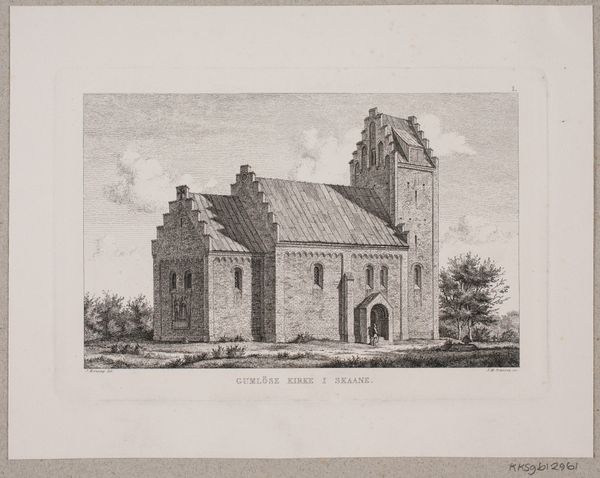
print, etching, architecture
# print
#
etching
#
landscape
#
architecture
#
realism
Dimensions: 126 mm (height) x 197 mm (width) (Plademål)
Curator: Here we have Julius Magnus-Petersen’s etching, "Salling Kirke," created between 1834 and 1866. Editor: My first impression is one of stark simplicity. The stark rendering captures a very still and almost austere scene. Curator: Absolutely, the print’s quiet mood draws us into a rural Danish landscape where the church dominates not just the immediate setting, but the community’s socio-religious life as well. The church’s stoic architecture echoes societal norms of that era, subtly reinforcing gendered power structures inherent in religious institutions. Editor: Yes, the labor evident in the tight, repetitive etched lines creating the stone textures emphasizes both the enduring nature of the physical building and the immense effort required to construct it. Consider the availability, transport and quarrying of the materials. The etching replicates the social impact and material burden on the local inhabitants who would've erected it. Curator: That materiality contrasts sharply with the implied spiritual dimension. I wonder too, how the placement of the stones along the bottom and sides of the print frames our reading of this building and of religious and social organization. Do we see evidence of patriarchy written within the social order? The building's solidity definitely gives it a permanent presence in its geographical, political, and social world. Editor: Definitely. Also, that texture creates a stark visual hierarchy; stone signifies permanence and investment of man-hours versus the less distinct sky. The choice of the etching process too…a replicable print…suggests a need for broader dissemination of a certain vision. A controlled replication is created to establish architectural or cultural visibility for church infrastructure. Curator: Considering that, the scale feels deliberate—grand but accessible—inviting introspection on faith’s role during the 19th century while it also hints at subtle patriarchal structures influencing everyday life through the building’s central function. Editor: I see your point and it helps cement my ideas regarding process and intention when deciding to replicate, disseminate and communicate through materials. Curator: And I find myself reassessing how art like this portrays and perpetuates normative, possibly inequitable power dynamics from bygone days. Editor: Looking closely allows us to appreciate the intersection between the building process and how its cultural weight is carried over the centuries.
Comments
No comments
Be the first to comment and join the conversation on the ultimate creative platform.
